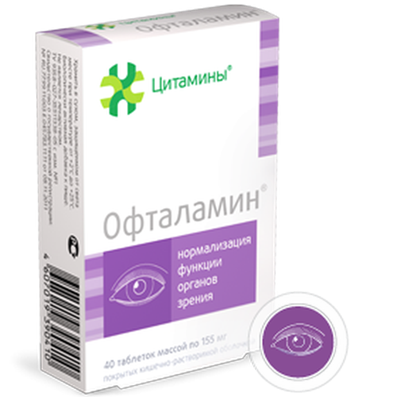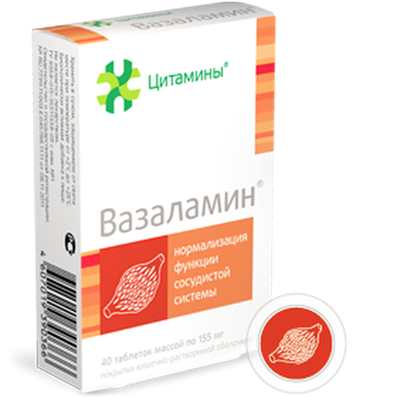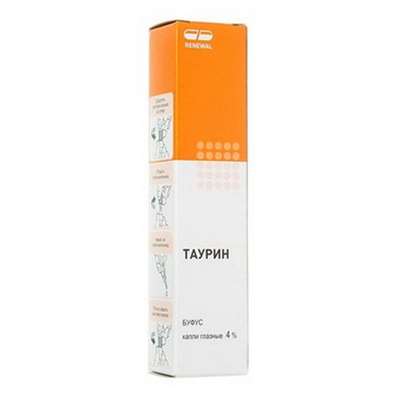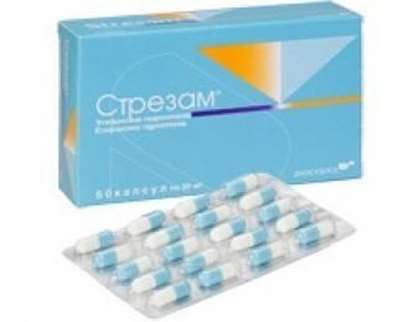Instruction for use: Aclidinium bromide + Formoterol (Aclidinii bromidum + Formoterolum)
I want this, give me price
Pharmacotherapeutic group:
Beta-adrenergic agonist in combination
M Cholinolytics in combinations
The nosological classification (ICD-10)
J44 Other chronic obstructive pulmonary disease
Allergic bronchitis, Bronchitis asthma, Asthmatic bronchitis, wheeze bronchitis, Bronchitis is an obstructive, bronchi disease, Shortness of sputum in acute and chronic respiratory diseases, Cough in inflammatory diseases of the lung and bronchus, Reversible airflow obstruction, Reversible obstructive airway disease, Obstructive bronchitis disease, Obstructive lung disease, Obstructive bronchitis, Spastic bronchitis, Chronic lung disease, Chronic nonspecific lung diseases, Chronic obstructive pulmonary disease, Chronic obstructive bronchitis, Chronic obstructive airway disease, Chronic obstructive pulmonary disease, Restrictive lung pathology
J44.9 Chronic obstructive pulmonary disease, unspecified
Obstructive pulmonary diseases, Bronchial obstruction, bronchial obstruction, Exacerbation of chronic obstructive pulmonary disease, reversible airflow obstruction, Reversible airway obstruction, panbronchiolitis, Panbronhit, COPD, Chronic pulmonary infection, Chronic infection of the lower respiratory tract, Chronic obstructive pulmonary disease, Chronic obstructive pneumonia, Chronic lung disease, Chronic obstructive pulmonary disease, Chronic bronchopulmonary disease, Chronic broncho-pulmonary diseases, Airway obstruction
Description
The combination of muscarinic receptor antagonist agonist + β2-adrenergic receptors.
Pharmacological Properties
bronchodilatory, m-anticholinergic, beta 2-agonists
Pharmachologic effect
Combination aklidiniya bromide + formoterol contains two bronchodilator: aklidiniya bromide - muscarinic antagonist is a long-acting receptor (also called anticholinergics) and formoterol - agonist of β2-adrenergic receptors of the long-acting. The combination of these substances with different mechanisms of action, provide an additive effect as compared with the individual components. Due to density differences muscarinic and β2-adrenoceptors in the central and peripheral airways of muscarinic receptor antagonists are more effective in relaxing the central airway agonists and β2-adrenergic receptors - peripheral airways, thus use of combination therapy may enhance the beneficial effect on lung function.
Aklidiniya bromide is competitive, muscarinic receptor antagonist is selective with longer binding time M3 receptor than to M2 receptor. M3 receptors mediate the reduction in airway smooth muscle. Inhaled aklidiniya bromide acts locally in the lungs as an antagonist of M3 receptors of airway smooth muscle and causes bronchodilation. Application aklidiniya bromide in patients with COPD also causes a decrease in the severity of symptoms, improvement of health conditions associated with the disease, reducing the frequency of exacerbations and improve exercise tolerance. Since aklidiniya bromide is rapidly degraded in plasma, the amount of systemic anticholinergic side effects is low.
Formoterol is a potent selective β2-adrenoceptor agonist. Bronchodilation is achieved due to relaxation of airway smooth muscle due to increased cAMP levels after activation of adenylate cyclase. In addition to improving lung function, formoterol reduces the severity of symptoms and improves quality of life in patients with COPD.
Pharmacodynamics
Clinical studies have shown that the combination aklidiniya bromide + formoterol provides a clinically significant improvement in lung function (as measured by FEV 1 from (OFV1) for more than 12 hours after application.
Combination aklidiniya bromide + formoterol has a rapid onset of action - within the first 5 minutes after inhalation compared to placebo. Valid combinations aklidiniya bromide + formoterol was compared with the effect of rapid-adrenoceptor agonist β2-formoterol in a dose of 12 micrograms. Maximum bronchodilation (maximum FEV1) as compared to baseline was achieved on the first day (304 ml) and maintained throughout the treatment period lasting more than 6 months (326 mL).
heart Electrophysiology
There were no clinically significant effect of combination aklidiniya bromide + formoterol on ECG parameters, including QT interval compared with aklidiniya bromide, formoterol, and placebo as well as the heart rate during the diurnal Holter monitoring.
Clinical efficacy
The program phase III clinical trials involving nearly 4,000 patients with a clinical diagnosis of COPD, moderate or severe included two 6-month, randomized study with a placebo and active controlled (ACLIFORM-COPD and Augment), 6-month extension phase of the Augment studies, as well as an additional 12 -mesyachnoe randomized controlled trial.
In long-term studies of the safety combination aklidiniya bromide + formoterol showed persistent efficacy without signs of tachyphylaxis during the duration of the use of more than 1 year.
The effect on lung function
Combination aklidiniya bromide + formoterol (11.8 + 340 ug / dose 2 times a day) provide a clinically significant improvement in lung function (FEV1 guest, forced vital lung capacity and inspiratory capacity) compared with placebo. Clinically significant bronchodilator effect was achieved within 5 minutes after the first dose and was maintained throughout the dosing interval.
In ACLIFORM-COPD study combination aklidiniya bromide + formoterol provides improved OFV1 1 hour after the application as compared to placebo and aklidiniya bromide 299 and 125 mL, respectively (p <0.0001 for both comparisons) and improving residual FEV1 compared to placebo and formoterol 85 and 143 mL, respectively (p <0.0001 in both comparisons). The study AUGMENT improved FEV1 after 1 h after administration compared with placebo and aklidiniya bromide was 284 and 108 ml, respectively (p <0.0001 in both comparisons) and improved residual FEV1 compared with placebo and formoterol - 130 (p <0 , 0001) and 45 ml (p = 0.01) respectively.
The relief of symptoms and improvement in health condition caused by disease
Shortness of breath and other symptoms. Combination aklidiniya bromide + formoterol provides a clinically significant improvement in dyspnea (assessed by transient apnea index (TDI) with TDI index increase after 6 months of therapy as compared to placebo at 1.29 units ACLIFORM-COPD study (p <0.0001 ) and 1.44 units - in AUGMENT study (p <0.0001).
The combined analysis of these two studies showed that the combination aklidiniya bromide + formoterol is associated with a statistically significant improvement bólshim TDI index compared with aklidiniya bromide (0.4 units; p = 0.016) or formoterol (0.5 units; p = 0.009 ).
Combination aklidiniya bromide + formoterol improved daytime symptoms of COPD, including shortness of breath, by chest symptoms, cough and sputum (evaluated using a common index E-RS), and the overall severity of nocturnal symptoms, early morning symptoms and signs limiting Activity in the early morning hours, compared to placebo, aklidiniya bromide and formoterol, but this improvement was not always statistically significant. Combination aklidiniya bromide + formoterol did not show a statistically significant decrease in mean number of nocturnal awakenings due to COPD, compared with placebo or formoterol.
Quality of life, due to the state of health
The study AUGMENT combination aklidiniya bromide + formoterol provided a statistically significant improvement in health status resulting from disease (assessed by questionnaire Respiratory Hospital of St. George (SGRQ), with improvements in SGRQ total index by -4.35 units compared to placebo (p <0, 0001). in ACLIFORM-COPD study, there was only a small decrease in total SGRQ index versus placebo result unexpectedly pronounced response to placebo treatment (p = 0.598) and percent of patients who achieved a clinically significant improvement from baseline, was 55.3% in group combination aklidiniya bromide + formoterol and 53.2% in the placebo group (p = 0.669).
A pooled analysis of data from these two studies showed a greater improvement in SGRQ total index with the combination aklidiniya bromide + formoterol compared with formoterol (-1.7 units; p = 0.018) or aklidiniya bromide (-0.79 units; p = 0.273).
Reducing the frequency of COPD exacerbations
As part of a combined analysis of the effectiveness of two studies lasting 6 months was demonstrated a statistically significant reduction of 29% the frequency of exacerbations moderate or severe (requiring antibiotic therapy or corticosteroids or resulting in hospitalizations) during therapy with combination aklidiniya bromide + formoterol compared with placebo (incidence on patient per year - 0.29 vs. 0.42, respectively; p = 0.036) and increase in the time to first exacerbation moderate or severe as compared to placebo (hazard ratio 0.7; p = 0.027).
Application of emergency treatment
Combination aklidiniya bromide + formoterol decreased the need for a means of emergency therapy for more than 6 months compared with placebo (0.9 inhalations / day (p <0.0001) aklidiniya bromide (0.4 ingalitsii / day (p <0,001 ) and formoterol (0.2 inhalation / day (p = 0.062).
Pharmacokinetics
Pharmacokinetic parameters aklidiniya bromide and formoterol inhalation used in combination were not significantly different from those observed when using the individual components.
Absorption. After a single inhalation combination aklidiniya bromide + formoterol aklidiniya bromide and formoterol rapidly absorbed into the blood plasma from reaching Cmax for 5 minutes in healthy volunteers, and for 24 minutes in patients with COPD. Maximum Css aklidiniya bromide and formoterol in COPD patients receiving combination aklidiniya bromide + formoterol 2 times a day for 5 days were achieved within 5 min after the inhalation, and were 128 and 17 pg / ml, respectively.
Distribution. The total number of falling into the lungs after inhalation aklidiniya bromide was approximately 30% of the metered dose. aklidiniya binding to plasma proteins in vitro most likely corresponds metabolite binding proteins due to rapid hydrolysis aklidiniya bromide in plasma. The binding to plasma proteins was 87% for the carboxylic acid and 15% to the alcohol derivative. The main protein in blood plasma that binds aklidiniya bromide is albumin.
formoterol binding to plasma proteins is 61-64% (34% - mainly to albumin). There was no saturation of binding sites in the concentration range is achieved with the combination aklidiniya bromide + formoterol at therapeutic doses.
Biotransformation. Aklidiniya bromide rapidly and extensively hydrolyzed to a pharmacologically inactive derivative of an alcohol and a carboxylic acid. Occurs chemical (non-enzymatic) hydrolysis and fermentation by the action of esterases. Main esterase involved in the hydrolysis of a person is butyrylcholinesterase. The concentration of the acid metabolite in the blood plasma after inhalation is about 100 times higher than the alcohol concentration of the metabolite active compound and unchanged.
The low absolute bioavailability aklidiniya bromide inhalation administration (<5%) due to its intensive system, and as a first pass by hydrolysis when in the lungs, and by ingestion. The biotransformation involving cytochrome CYP450 isozymes plays a minor role in the overall metabolic clearance aklidiniya bromide. Studies in vitro have shown that a therapeutic dose aklidiny or its metabolites do not inhibit or induce any CYP450 isozymes without inhibiting esterase (carboxyl esterase, acetylcholinesterase and butyrylcholinesterase). It is also found in vitro that aklidiniya bromide or its metabolites are substrates or inhibitors of P-gp.
Formoterol is derived mainly by metabolism. The main route is the direct glucuronidation with O-demethylation followed by conjugation to the glucuronide. The O-demethylation of formoterol involved isoenzymes CYP2D6, CYP2C19, CYP2C9 and CYP2A6. At therapeutically relevant concentrations of formoterol does not inhibit the CYP450 isoenzymes.
Withdrawal. After inhalation combination aklidiniya bromide + formoterol dose 340 + 11.8 ug end T1 / 2 aklidiniya bromide and formoterol is approximately 5 and 8 hours, respectively.
After the on / in the 400 mg radiolabeled aklidiniya healthy volunteers about 1% of the administered dose is excreted unchanged in the urine. Up to 65% of the dose excreted as metabolites in the urine and up to 33% - in the form of metabolites in the faeces. After inhalation, 200 and 400 ug aklidiniya bromide healthy volunteers and patients with COPD aklidiniya unchanged excretion in urine was very low (about 0.1% injected dose), indicating that renal clearance plays a minor role in the overall clearance of plasma bromide aklidiniya blood.
The bulk of the injected dose of formoterol is metabolized in the liver, followed by renal excretion. After inhalation of 6-9% delivered dose of formoterol was excreted in the urine in unchanged form or as conjugates of formoterol.
Special patient groups
Elderly age. Research pharmacokinetics of the combination aklidiniya bromide + formoterol in elderly patients have not been conducted. Because elderly patients do not require dose adjustment aklidiniya bromide and formoterol monotherapy, with the combination aklidiniya bromide + formoterol adjust the dose as required.
Impaired function of the kidneys and liver. Information about the features of the application of a combination aklidiniya bromide + formoterol in patients with impaired renal or hepatic function no. As in patients with impaired hepatic function or nochek does not require dosage adjustment aklidiniya bromide and formoterol monotherapy, with the combination aklidiniya / formoterol dose adjusted as required.
Pregnancy and breast-feeding
Data on the use of a combination aklidiniya bromide + formoterol in pregnant women are missing.
In animal studies, fetotoxicity was observed only at doses significantly higher than the maximum dose in humans aklidiniya bromide and adverse effects in reproductive toxicity studies only at very high systemic exposure of formoterol.
During pregnancy, a combination aklidiniya bromide + formoterol should be used only in cases where the expected benefit outweighs the potential risk.
It is not known whether aklidiniya bromide allocated (and / or its metabolites) or formoterol in breast milk. Since the pre-clinical studies have shown that small amounts of bromide aklidiniya (and / or its metabolites) and formoterol penetrate into milk during breastfeeding combination aklidiniya bromide + formoterol should be used only in cases where the expected benefit to the woman outweighs the potential risk to the infant.
Fertility. Preclinical studies have shown a slight decrease in fertility only when used in doses far exceeding the maximum dose aklidiniya bromide and formoterol in humans. It is considered unlikely that the use of a combination aklidiniya bromide + formoterol at the recommended dose will affect fertility in humans.
Side effects
The following safety information is based on the experience of the application of a combination aklidiniya bromide + formoterol (at the recommended therapeutic dose of up to 12 months) and its individual components.
Security Profile Overview
Adverse reactions associated with the use of a combination aklidiniya bromide + formoterol are similar to those observed in the application of its individual components. Since this combination comprises aklidiniya bromide and formoterol, against the background of application can be expected adverse reactions described for these components.
The most frequently reported adverse reactions with the combination aklidiniya bromide + formoterol were nasopharyngitis (7.9%) and headache (6.8%).
The frequency of adverse reactions is based on an assessment of the overall factors of occurrence of reactions observed with the combination aklidiniya bromide + formoterol in a dose of 340 + 11.8 mg of the combined analysis of randomized placebo-controlled phase III clinical trials lasting at least 6 months.
The frequency of adverse reactions is represented by the following notation: very common (≥1 / 10); commonly (≥1 / 100, <1/10); uncommon (≥1 / 1000, <1/100); rare (≥1 / 10,000, <1/1000); very rare (<1/10000) and the frequency is not known (can not be estimated from the available data).
Infectious and parasitic diseases: often - nasopharyngitis, urinary tract infection, sinusitis, tooth abscess.
Immune system: rarely - hypersensitivity; the frequency is unknown - otek4 angioedema, anaphylactic reaction.
On the part of metabolism and nutrition: rarely - hypokalemia, hyperglycemia.
Mental disorders: often - insomnia, anxiety; rarely - excitement.
From the nervous system: often - headache, dizziness, tremors; rarely - a violation of taste.
On the part of the organ of vision: rarely - blurred vision.
From the heart: rarely - tachycardia, prolongation of the QTc interval on EKG3, palpitations; the frequency is unknown - angina.
The respiratory system, organs, thoracic and mediastinal disorders: often - cough; infrequently - dysphonia, throat irritation; rarely - bronchospasm, including paradoxical.
On the part of the digestive system: often - diarrhea, nausea, dry mouth; rarely - stomatitis.
Skin and subcutaneous tissue disorders: rare - rash, itchy skin.
On the part of the musculoskeletal system and connective tissue disorders: often - myalgia, muscle cramps.
On the part of the kidney and urinary tract: rarely - urinary retention.
General disorders and administration in place: often - peripheral edema.
Laboratory and instrumental data: often - increasing the activity of CK in the blood; Infrequent - increased blood pressure.
Interaction
Drugs for the treatment of COPD
The combined use of a combination aklidiniya bromide + formoterol with other anticholinergic agents, and / or β2-adrenergic agonists long-acting receptor has not been studied and is not recommended.
Although formal studies of drug interactions combination aklidiniya bromide + formoterol in vivo has been conducted, it has been used concomitantly with other drugs for the treatment of COPD, including β2-adrenergic agonists, short-acting receptors, methylxanthines, and oral and inhaled corticosteroids without clinical signs of drug interactions.
Metabolic interactions
In in vitro studies have established that the interaction is not expected at a therapeutic dose aklidiniya or metabolites P-gp substrates and drugs metabolized by esterases and CYP450 isozymes. At therapeutically relevant concentrations of formoterol does not inhibit the CYP450 isoenzymes.
Drugs that cause hypokalemia
Concomitant use of methylxanthine derivatives, steroids, or diuretics may potentiate kaliynesberegayuschih possible hypokalemic effect of agonists of β2-adrenergic receptors, so care should be taken in their joint application (see. "Precautions").
Blockers β2-adrenergic receptor
Blockers of β-adrenergic receptors may attenuate or reverse the effect of β2-agonists adrenergic receptors. If necessary, use β-adrenergic blockers receptors (including in the form of eye drops) is preferable assignment blockers cardioselective β-adrenergic receptors, although they should be used with caution.
Other pharmacodynamic interaction
It should be used with caution in combination aklidiniya bromide + formoterol in patients receiving drugs prolonging the QTc interval, such as MAO inhibitors, tricyclic antidepressants, antihistamines, or macrolides because they may potentiate the effect of formoterol in the CCC. PM, prolonging the QTc interval, increase the risk of ventricular arrhythmias.
Overdose
Experience of treatment combination aklidiniya bromide + formoterol overdose is limited.
Symptoms: High doses of the combination may lead to increased symptoms and an anticholinergic and / or β2-adrenergic action, the most common of which are blurred vision, dry mouth, nausea, muscle spasms, tremor, headache, palpitations feel and hypertension.
Treatment: In case of overdose, discontinue use of the combination aklidiniya bromide + formoterol. It shows the supported and symptomatic therapy.
Routes of administration
Inhalation.
Precautions
Bronchial asthma
Combination aklidiniya bromide + formoterol should not be used in asthma, clinical trials of the combination have not been conducted with bronchial asthma.
paradoxical bronchospasm
In clinical trials, no cases of paradoxical bronchospasm during treatment with combinations of aklidiniya bromide + formoterol at the recommended dose. However, paradoxical bronchospasm was observed during other inhalation therapy. In the case of its occurrence should be discontinued and consider alternative therapies.
Combination aklidiniya bromide + formoterol is not intended for the relief of acute episodes of bronchospasm.
Impact on CCC
The combination aklidiniya bromide + formoterol should be used with caution in patients with myocardial infarction in the preceding 6 months, unstable angina, new-onset arrhythmia within the previous 3 months, with an interval of QTc (calculated by Bazetta method)> 470 ms or hospitalized for the preceding 12 months for heart failure, III and IV NYHA functional class classification, because these patients were enrolled in a clinical study.
For some patients agonists of β2-adrenergic receptors can cause increased heart rate and blood pressure, ECG changes in the form of a flattening of the T wave, the ST segment depression and prolongation of the QTc interval. In the case of these effects may require early termination of therapy. Β2-adrenergic agonists of long action should be used with caution in patients with prolongation of the QTc interval in the present or in history or receiving drugs that affect the duration of the QTc interval (see. "Interaction").
systemic effects
The combination aklidiniya bromide + formoterol should be used with caution in patients with severe disorders of the cardiovascular system, convulsive disorders, thyrotoxicosis and pheochromocytoma.
When using high doses of β2-adrenergic agonists may develop metabolic effects of hyperglycemia and hypokalemia. In phase III clinical trials significant increase in the frequency of blood glucose concentration against application aklidiniya combination bromide + formoterol was low (0.1%) and similar in the placebo group. Hypokalemia is usually transient and did not require additional treatment. In patients with severe COPD, hypokalaemia may be potentiated by hypoxia and concomitant treatment (see. "Interaction"). Hypokalemia may increase the risk of arrhythmia.
Due to the combination of anticholinergic activity aklidiniya bromide + formoterol should be used with caution in symptomatic benign prostatic hyperplasia, urinary retention, or angle-closure glaucoma (despite the fact that direct contact with the eyes is very unlikely). Dry mouth, notes on the background of anticholinergic therapy, while maintaining for a long time can lead to dental caries.
Effects on ability to drive and use machines. Use of a combination aklidiniya bromide + formoterol no effect or a minor influence on the ability to drive vehicles and use machines. Development of blurred vision or dizziness may influence the ability to drive vehicles or operate machinery.

 Cart
Cart





